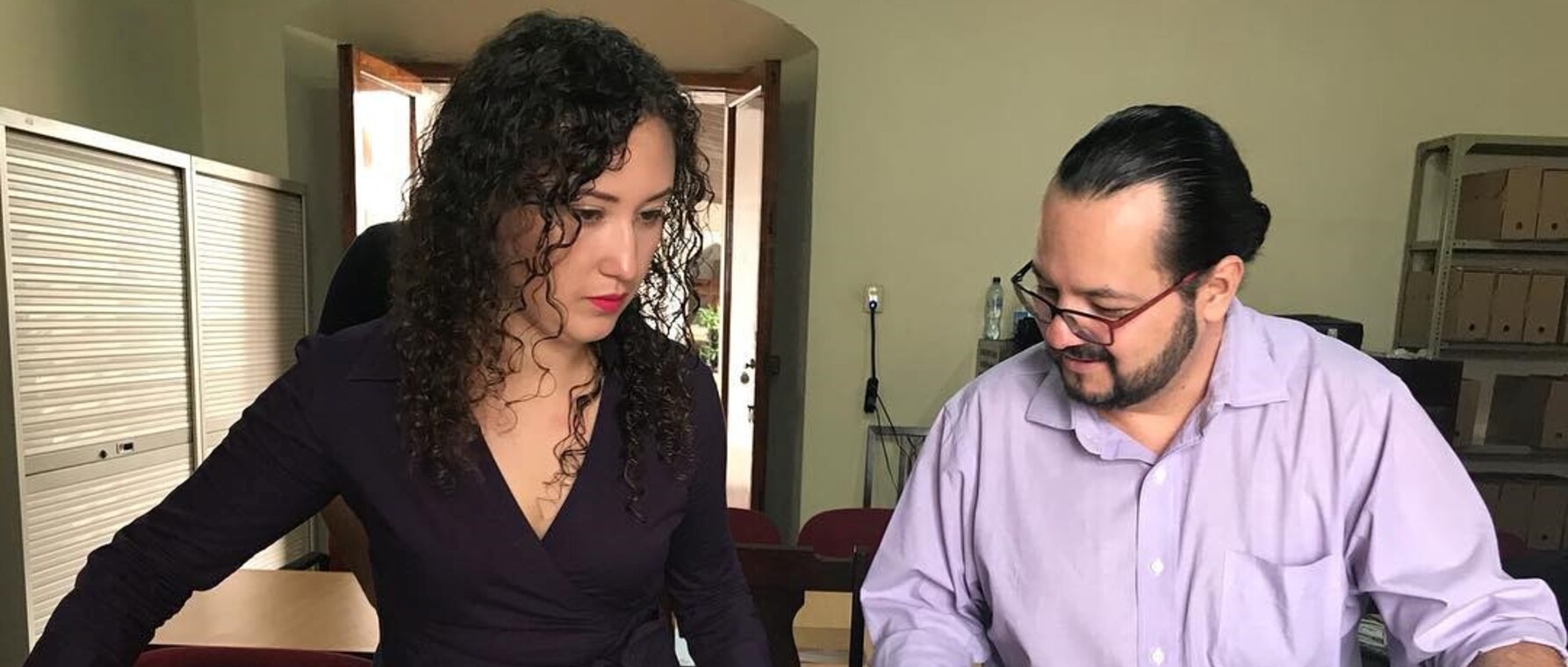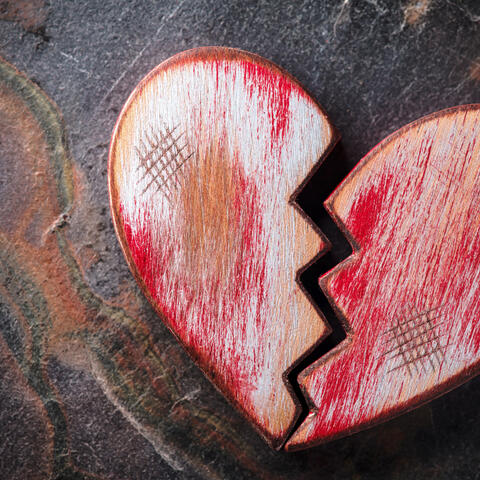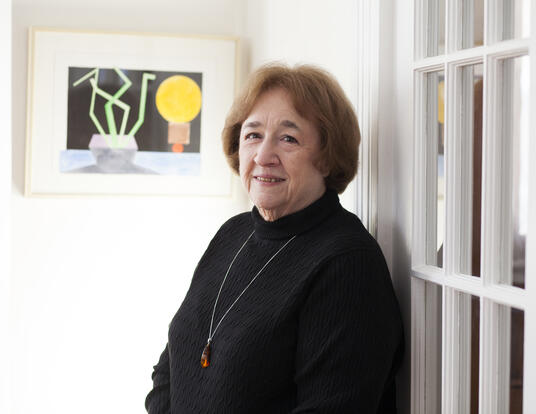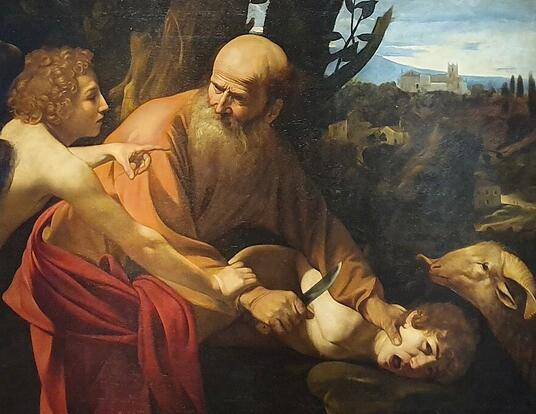A Disruptive Moment
How 18th-century earthquakes impacted the composition of music

In July 1773, a 7.5 magnitude earthquake hit Antigua Guatemala, which had served as the colonial capital of Central America for 200 years. As the quake subsided, leaving approximately 600 people dead and buildings reduced to rubble, an unexpected sound arose—the sound of those who had survived the disaster, singing.
The idea that natural disasters can have an effect on the production of musical culture, particularly earthquakes from the 18th century, interests Diane Oliva, a PhD student in music. In conducting research for her dissertation, she plumbs archives in Central America, South America, and Portugal to document the effects of three major earthquakes on music: in 1746 in Lima, Peru; in 1755 in Lisbon, Portugal; Boston in 1755; and in 1773 in Antigua Guatemala.
The first impact is local, of course. In Antigua Guatemala, Oliva says, sources describe people singing in the immediate aftermath.
“Despite the fact that the city had lost its palace, cathedral, everything, the city paid musicians and gave them food and accommodations, so they could perform the daily rituals that were so essential to life there,” Oliva says. Within two weeks, religious rituals had been re-established, and the earthquake was seen as an act of God. The people sang as a way to repent, and many details describe the sounds of pain—moaning, wailing—mixed in with church chants and hymns. “With the city’s major religious temples in ruin, priests held mass in straw ranches—straw because the people were terrified of roofs collapsing—in the middle of an open plaza,” she describes. “Music became a way to imbue these provisional and less dignified spaces with solemnity and purpose.”
But there’s a secondary impact as well: How disaster is reported, and to whom. Europeans were obsessed with earthquakes in the way that we were glued to our televisions during the 2013 Boston Marathon bombing. Engravings were widely available and extremely popular, and readers throughout Europe were riveted by the narratives of disaster, a popular genre of literature in the 18th century.
“There are vivid accounts of people [during the 1746 Peruvian earthquake] trying to crawl through rubble of Callao, carrying saints’ icons and playing music and singing,” Oliva says. “The most famous account—although it’s unclear who wrote it, or of its authenticity—was translated from Spanish into English and French for European audiences.”
From the Ashes
The 1755 Lisbon earthquake took place mid-morning on November 1, All Saints’ Day, when most of the population would have been at the church of their favorite patron, the aristocrats seated up front. “It came in three waves: quake, tsunami, fire,” Oliva reports. “People who took refuge from the quake on the river banks died in the tidal waves that followed. And because it was All Saints’, there were thousands of candles throughout the city, so many that the waves didn’t quench the flames.” The fire burned for five days, destroying the city completely.
Voltaire wrote a response to the Lisbon earthquake—Rousseau and Kant, as well—attempting to explain with science what had been previously understood as the wrath of God. The reports that Oliva is interested in, however, come largely from colonial priests, who write of the disasters with a different focus.
“We know what happened after the Lisbon and Guatemala quakes because local Catholic priests had to report to their kings,” she explains. “But you don’t see the quake, you see the product of the quake. How do you put words to that?”
Many contemporary reports used sonic language as a way to explain the experience. In London, for example, a minor earthquake in 1750 was described as a cotton mill exploding, or as a carriage clattering over cobblestones. In a lecture at Harvard following a small quake off the coast of Cape Ann in 1755, a musical analogy was used to explain the physics involved: The vibration of the earth was like the vibration of strings on a musical instrument. Composers, however, had a more difficult time translating the sound to music and began experimenting musically.
“The main artistic aesthetic in the 18th century was nature; images of storms and oceans are prominent,” Oliva says. “As sonic an event as it is, it’s fascinating that composers had a hard time evoking the earthquake. Bach, for example, revised the earthquake moment in his St. John Passion multiple times.”
Untapped Resources
Oliva has spent much of the last year in Central America, specifically researching the Guatemalan earthquake at the Archivo Histórico Arquidiocesano. “Guatemala has always been a volatile country, so not as much research has been conducted there,” she says. “I’m finding a wealth of untapped musical information.”
Three thousand–plus musical scores, mostly villancicos—vernacular polyphonic works—are archived at Archivo Histórico Arquidiocesano. Many were written by an 18th-century composer, the capellmeister of the cathedral during time of the quake. Because these materials exist, scholars can study how a disaster impacts the style of composing, as well as how compositions are acquired.
“An earthquake is a disruptive moment. It interrupts the circulation of music and musicians in the colonies,” Oliva explains. “Prior to the quake, music came from Italy, Spain, Portugal. Afterward, the church was more conservative with funds.” The church re-used old music, hoping that people wouldn’t recognize that it had been recycled. Celebrations for the feast day of Corpus Christi in Guatemala, for example, included 16 villancicos, which were meant to be new from year-to-year. After the quake, composers had to rearrange existing pieces or write new ones, often drawing on student compositions to meet the demand.
The music was composed using mensural notation—a type of 16th- to 17th-century musical notation—and Oliva, whose parents are both from El Salvador, is part of a group of young scholars from the region who are being trained by the musicologist Omar Morales Abril in a program jointly sponsored by the Universidad de San Carlos (Guatemala City) and Universidad Nacional Autónoma de Honduras (Tegucigalpa) to read and transcribe colonial-era repertoire from the Guatemalan cathedral.
While Oliva was familiar with the theory through a chant course taught by Morton B. Knafel Professor of Music Thomas Forrest Kelly, this Central American iteration is not always clear cut. “You can study church music in Seville in the 16th century but it’s different when that music gets relocated to colonies,” Oliva shares. “They make changes to the way things are notated, having to do with the way they are performed locally.”
Lesley Bannatyne is the managing communications coordinator in Harvard University’s Department of Music.
Get the Latest Updates
Join Our Newsletter
Subscribe to Colloquy Podcast
Simplecast Stitcher





